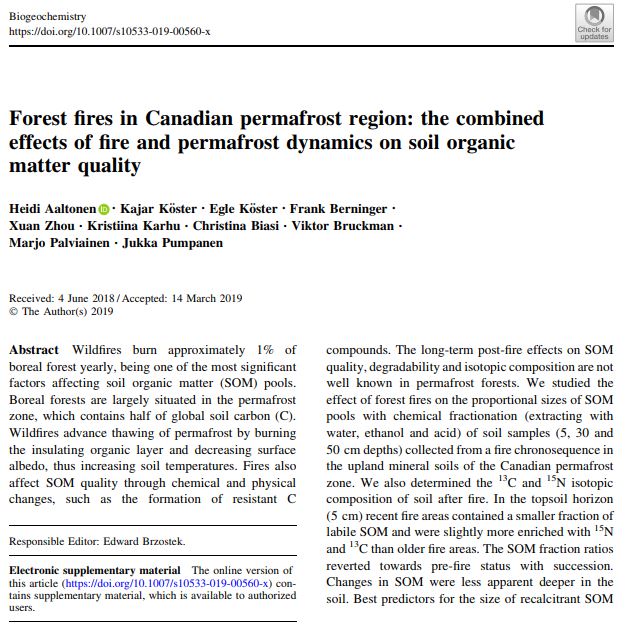New paper by Aaltonen et al., 2019 studied how the proportions of insoluble (recalcitrant) and soluble (labile) fractions in soil organic matter (SOM) change as a result of forest fire in the active layer on permafrost, and what are the most important factors (active layer depth, soil temperature, biomass, C/N ratio) explaining the size of insoluble (recalcitrant) fractions of SOM post-fire. Also the abundancies of stable isotopes δ 15N and δ 13C change along with depth and time since last fire was studied.
The SOM fraction ratios reverted towards pre-fire status with succession. Changes in SOM were less apparent deeper in the soil. Best predictors for the size of recalcitrant SOM fraction were active layer depth, vegetation biomass and soil C/N ratio, whereas microbial biomass was best predicted by the size of the recalcitrant SOM fraction. Results indicated that SOM in upland mineral soils at the permafrost surface could be mainly recalcitrant and its decomposition not particularly sensitive to changes resulting from fire.
